Special to The Greanville Post—
BUENOS AIRES NOTEBOOK
“Someday Americans too will have to come to terms with America’s crimes and their individual roles in those crimes…”
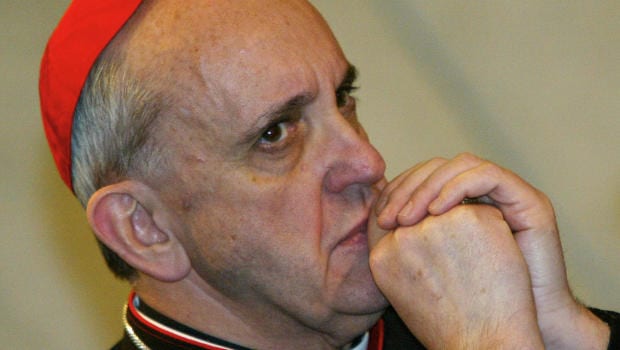
At What Price Silence?
By Gaither Stewart
(Rome) Argentineans are still trying to come to terms with what happened in their country during the years of the Dirty War and the military dictatorship, 1976-1983. During those seven years, tens of thousands of their people were tortured and murdered by a brutal military machine and its Allianza Anticommunista Argentina, the Triple A, supported by the Argentine Catholic Church, large landowners, much of the middle class, and above all by the USA through the agency of the CIA’s anti-communist Operation Condor. U.S. interventions in Latin America are an old story, but Operation Condor, the Latin American extension of the Cold War, was especially dirty and brutal: anyone in Argentina in disagreement with the U.S. approved socio-political model was labeled subversive and eligible for physical elimination: abduction, torture and murder or fed alive to the sharks from helicopters. The same ugly system is repeated today in America’s worldwide “extraordinary rendition”.
In this article I have discussed the Argentinean writer, Jorge Borges, and the newly elected Pope of the Roman Catholic Church, the Argentinean Jorge Mario Bergoglio, in order to illustrate the role of some intellectuals of the middle class and more importantly the role of the Catholic Church in what happened in Argentina in those unforgotten and unforgettable seven years.
(Most of the following about Borges was written in Buenos Aires in 2008.)
I am uneasy writing about Jorge Luis Borges (b.1899, Buenos Aires, d. 1986, Geneva). Borges wrote so much and I have read so little of his early works. Yet his world of myth and fantasy and metaphysics has so influenced me in the past that since I am here in his city of Buenos Aires where I can feel Borges the man rather than only Borges the writer I have known from afar, I feel I have to record something about him in flesh and blood.
However, I am entering a veritable minefield. Being in his very proximity changes my relationship with him. I have known Borges—poet, essayist and fiction writer—as one of the most important authors of the twentieth century. In these days I have been to his old address in Calle Maipú in central Buenos Aires, I passed through the Galleria del Est he loved downstairs under his apartment, I sat in the confiterias, the cafès, he frequented—El Tortoni, Los 36 Billares, La Biela—I visited the National Library he directed, I walked along the street named after him, Calle Jorge Luis Borges, in the barrio of Palermo where he also lived, and I have read about his life in Buenos Aires, his curiosity about the world of tango and gangsters and knife fights.
My problem in understanding Borges the man is a familiar one. I was acquainted with his work before I considered him the person. As usual the art conditions one’s feelings about its creator. It happens this way especially with painters: if you see the good art before its creator, your relationship with the artist you might meet in person later is conditioned. For you he will remain forever first the artist, then the person.
However, the reverse can also be true: if you get to know first the person, then later his art, you sometimes wonder that the person you thought you knew created the magnificent art. It seems miraculous that a childlike person, who gets drunk, gossips about his neighbors, worries about his falling hair and spouts absurd political and social ideas, creates disturbing works of art. You tend to underrate the art because of the ordinariness of the person who created it.
Borges was not ordinary. Born into an international family that lived in Europe while he was young, Borges spoke English before Spanish. “Georgie” was precocious and everyone assumed from the start he would be a writer. Legend has it that he wrote his first story at seven and translated Oscar Wilde’s “The Happy Prince” at nine or ten, though skeptics in Buenos Aires claim that his father did the translation.
After the family’s return to Buenos Aires, Borges at twenty-five became the center of Argentine letters, writing poetry, essays and stories and sponsoring writers like the great Julio Cortázar. During the 1950s he headed the national library of 800,000 volumes, which must have been a kind of paradise for him since books and words were his life. For that reason the Italian writer Umberto Eco in The Name of the Rose named his librarian, Jorge de Burgos, after him.
In his opposition to Peron, Borges resigned from the national library and in 1976 lent support to the military dictatorship that overthrew Peron. I was not aware of this before I got on his trail in Buenos Aires. His support for the regime that killed and tortured and ruined the nation in the name of “order” creates enormous problems for Borges lovers.
A politically center-left lawyer in Buenos Aires I asked about this apparent anomaly in Borges showed little surprise, claiming that people just didn’t know what was happening. Finally, in 1980, after thousands of the tortured bodies of the best of Argentine youth had been dumped into the ocean, Borges signed a petition in honor of the desaparecidos.
Yet this “We didn’t know” always rings suspicious. The majority of the 30,000 desaparecidos were from the city of Buenos Aires. Thousands of families and relatives and friends were oppressed as the dictatorship crushed all “subversion”. Who were the subversives anyway? They were the non-Marxist leftwing of the Peronist movement, the Montoneros and the Marxist Peoples Revolutionary Army (ERP), who, though they were forced to go underground, were the only political opposition.
Borges knew everybody. Did no one tell him what was happening? Or was it simply too distant from his metaphysical world? But if he knew? How could Borges not know? His one-time friend, the Chilean poet and Communist, Pablo Neruda, was quoted as saying, “He (Borges) doesn’t understand a thing about what’s happening in the modern world, and he thinks I don’t either.” The Nobel Prize Committee must have believed the same, for though Borges was a longtime candidate for the coveted prize, he never got it. His support for the dictatorship was most likely the reason.
Like Borges, Neruda too made a major political error: he dedicated a poem to Stalin on his death in 1953 and it took official revisionism in the USSR for him to change his mind. Nonetheless, Neruda went on to support the Socialism of Allende’s three-year government in Chile and to defend Cuba against the USA. Finally, in contrast to Borges, he won the Nobel in 1971.
I hope Neruda was right. How could a man concerned with circular labyrinths and mirrors reflecting his alter ego understand what was really happening around him? Trying to resolve the riddle of time, maybe Borges was lost in an infinite series of times, parallel and divergent and convergent, in his intellectual world ranging from Gnosticism to the Cabala.
His philosophic stories are masterly even if they often seem contrived. On a visit to Rome near the end of his life he told the Australian writer Desmond O’Grady that he wanted to write stories like those of Kipling. And some of his earliest stories about Buenos Aires were told straightforwardly. Borges’ first steps in literature were in English, the language in which he originally read Don Quixote. His grandmother Frances Halsam was English. And poetry came to him through his father intoning, in English, Swinburne, Keats and Shelley. He considered English literature the finest. It made him aware that words convey not only messages but also music and passion.
You could classify Borges as a twice-displaced person, closer to the English language than to Spanish, a self-confessed ‘international writer’ who happened to live in Buenos Aires, but this would ignore his attachment to Argentinean history and legends, to Buenos Aires for which he said he wanted to invent a mythology, and to “the ubiquitous smell of eucalyptus” at the summerhouse of his boyhood.
I read Borges’ famous book, El Aleph, a collection of seventeen of his most suggestive and mysterious stories. The story “Los Teologos” speaks of an ancient sect on the banks of the Danube known as the Monotonous who professed that history is a circle and there is nothing that has not been before and that there will never be anything new. For them, in the mountains, the Wheel and the Serpent had replaced the cross. It was heresy. Surprisingly, Borges’ protagonist reflected and decided that the thesis of circular time was too different to be dangerous; the most fearful heresies are those nearest orthodoxy. In fact, the poetic books of the Old Testament are filled with such a thesis. The Old Testament has a way of saying the most terrible things in poetic words, like the words of the King Solomon, the teacher, that have graced film and literature:
What has been will be again,
There is nothing new under the sun.
In the first story in El Aleph, “El Inmortal,” he repeats the refrain that no one is guilty … or innocent. When life is circular, without beginning or end, that is when man is immortal, then everything, good and evil, happens to every man. In an apparent search for a world of order Borges seems to have sensed that it would be madness to think that God first created the cosmos and afterwards chaos. This now rings like a whitewash of evil.
Borges’ many books are on prominent display in the magnificent bookstores of Buenos Aires and his anniversaries are marked with new editions of his works and round tables about him. Like Joycean tours in Dublin, Buenos Aires offers Borgean tours—the streets Borges walked, his cafés, his bookstores, his Buenos Aires of the neighborhoods where he lived and about which he wrote extensively. Borges is widely acclaimed as one of the greatest voices of world literature, winning international prizes and recognition. Yet he chose to support the dictatorship, even during and after the terror, while continuing to write his esoteric stories so far removed from harsh realities.
Is retirement to an ivory tower permissible? Seen in this light he seems to be the creator of art for art’s sake. The belief in art for art’s sake, according to the Russian Communist theorist Georgy Plekhanov, “arises when artists and people keenly interested in art are hopelessly out of harmony with their social environment.” It has been said that art for art’s sake is the attempt to instill ideal life in one who has no real life and is an admission that the human race has outgrown the artist. That seems to have happened in Argentina and Chile in the Seventies and Eighties of last century.
Commitment on the other hand involves the writer’s trying to reflect through his work a picture of the human condition—which is social—without losing sight of the individual. Borges seemed to believe that art was a thing apart. Despite the obstacles politics raises, art, I believe, is part and parcel of the social. Writing is a social act insofar as it derives not only from the will to communicate with others but also from a resolve to change things. To remake the world. It seems unimaginable that the military dictatorship could be a goal or a means for the artist.
Borges was both universal and at the same time an Argentinean nationalist, who wrote of tango and gauchos and the streets of Buenos Aires. Since he was too universal to accept Peronist populism, it is a mystery how he could fall for the “club of gentlemen” of the military assassins.
The Argentine military dictatorship, we now know, was like something so horrible per se that its very existence contaminates past, present and future life. By the very definition of the now international Spanish word describing the 30,000 victims, the desaparecidos continue to lie outside time and memory. Afterwards, Borges, again the great artist, forgiven and reestablished, wrote that, “As long as it (the military dictatorship) exists no one in the world can be courageous or happy.”
His story in El Aleph , “Deutsches Requiem”, concerns a Nazi torturer and killer, the Deputy Director of the concentration camp of Tarnowitz, who has been sentenced to death and is to be executed the next morning. Otto Dietrich zur Linde credits Brahms, Schopenhauer, Shakespeare, Nietszche and Spengler as his benefactors who helped him “confront with courage and happiness the bad years and to become one of the new men.” He acquired the new faith of Nazism and waited impatiently for the war to test his faith. His was to be the total experience, of victory and defeat, of life and death.
Otto thought: I am satisfied by defeat because secretly I know I am guilty and only punishment can redeem me. He thought: Defeat satisfies me because it is the end and I am tired. He thought: Defeat satisfies me because it happened, because it is linked to all the events that are, that have been, that will be, because to censure or deplore one single real event is to blaspheme the universe.
In other words, everything is linked in Borges’ great circular universe. Everything happens again and again. Everything is part of one whole. The story written shortly after World War II closes with Otto’s disturbing words: Hitler believed he fought for his country; but he fought for all, even for those he attacked and hated…. Many things have to be destroyed in order to build the new order, now we know that Germany was one of those things…. I look at my face in the mirror to know who I am, to know how I will act in a few hours, when the end stands before me. My flesh will be afraid, but not I.
I don’t quite know what to think of this story. It upsets me. Hopefully, I keep reading over and over the following quote from Borges which helps: “One concept corrupts and confuses the others.”
I hope he was saying that the thoughts of Otto Dietrich zur Linde were pure speculation and merely part of the abstract universal metaphysical whole.
So, I continue reading El Aleph, alternately exalted by Borges the writer and at times disillusioned by him the man.
•••
The purification and reform of the Roman Catholic Church became a necessity in light of the recent moral and financial scandals rocking the structure of the Holy See and the Papacy itself. For the first time in five centuries the reigning pope, Benedict XVI, was forced to resign. A new pope was elected to execute the reform and renewal.
World media have broadcast the humble, self-effacing image of the new pope, the Jesuit and former Archbishop of Buenos Aires, Jorge Mario Bergoglio, who assumed the name of Francis, the hippy saint of Assisi. During the week since his election he has moved around Rome, in his simple white cassock, sometimes in a non-official car, sometimes in a bus with other cardinals, visiting churches and Church social centers. He received several thousand journalists from the far corners of the world who have written about a pope who loves the tango, was once engaged, is a rabid fan of the Buenos Aires soccer club, San Lorenzo, says buon giorno to open late morning speeches and buon appetito to close. He continues to ask the faithful to pray for him and instructs the faithful to continue to beg for forgiveness and to grant forgiveness. Yet the shadow of his past of 35 years ago remains.
Nonetheless, Bergoglio’s election has stirred the world of the faithful of the Catholic Church. While his choice of the papal name of Francis, his simple style and emphasis on a Church of and for the poor underline a Catholic Church in change, his election also signals a shift of gravity of world Catholicism away from a largely secular Europe of beautiful but empty churches to Latin America with 41% or 483 million of the world’s 1.2 billion Catholics and where Catholicism lives among the people. In his first words as Pope Francis, Bergoglio said: “They found me at the end of the Earth.”
Despite his new style and promise for drastic changes and despite that shadow hanging over his past, the mainline press, also in Argentina itself, recalls the accusations against Bergoglio for collaboration with the Argentine military junta during its bloody regime, 1976-83. This part of his background has been mentioned in the Italian press and TV and indignantly denied by the Vatican.
During my time in Argentina it became clear that the generation emerging from the bankruptcy of Argentina on the heels of both Peronism and the military dictatorship was scarred, confirmed by an ongoing national debate about crime and punishment. Argentina is especially scarred by the moral crisis of the years of the dictatorship. People are uncertain about what went wrong in a nation that permitted the horror of 30,000 desaparecidos, the emigration of many more, and the moral degeneration of the nation.
Though Argentina apparently wants to come to terms with that past, it has proven to be an elusive operation. Who is guilty of what is still an open question. That the Argentine Catholic Church was largely silent (and guilty of that silence) during the dictatorship is clear. But the full role of individuals like Jorge Bergoglio, despite the accusations against him personally, and the horror of the personal role of some priests, is not clear. For confusion and fear too reigned in those times in Buenos Aires. And actions that afterwards seemed odious and indefensible seemed different at the time. Now, since America and again Europe have their scarred generations, the Argentine experience is worth examining in more detail for one hopes that Americans too someday are going to discuss questions of crime and punishment, guilt and the moral crisis. Someday Americans too will have to come to terms with America’s crimes and their individual roles in those crimes.
From journalism and films I knew of the horrors of the Argentine military dictatorship but from afar I was not aware of its continuing effects on people today. Therefore I don’t believe that a little history will ruin the flow of this narrative of an important period of my life.
In 1975, as terrorism exploded in Europe, in Argentina terrorist acts by left- and rightwing groups killed some seven hundred people while the cost of living skyrocketed and strikes and demonstrations were constant. The Argentine Right still refers to that period as a civil war. On March 24, 1976, during the period the original Red Brigades were being crushed in Italy by the CIA-sponsored Gladio forces, a military junta supported by the USA seized power in Argentina, imposed martial law and initiated seven years of terror to stamp out “subversives and Communists”.
The military conducted a so-called “dirty war” to restore order and eradicate its opponents. In the aftermath, the Argentine Commission for Human Rights charged the junta with 2,300 political murders, over 10,000 political arrests, and the disappearance of 20,000 to 30,000 people.
A Swiss journalist friend in Buenos Aires, Hans Moser, wrote that many Argentineans greeted the putsch, in the hope that the generals could pull the country out of recession and stop the violence. Instead the military substituted it with institutional violence. Then, when the violence finally abated the economy was in chaos. Paradoxically much of the terrified middle class that in the end suffered considerably had supported the military intervention.
Only years later was the extent of state terror in Argentina fully uncovered, as it will surely happen in the USA when Americans begin to come to terms with its desaparecidos and torture and concentration camps and hundreds of thousands of dead it has left across the world. Though terrorist bombs killed indiscriminately in Argentina, the torturers were gruesome; pilots have testified to the flights over the ocean to dump the wrecks of prisoners to the sharks, which may have well happened at Guantànamo. Those wounds to Argentine society have not yet healed.
Soon after my return to Buenos Aires in 2008, in a park along a busy commercial street, I found a sign bearing the park’s name, “Plaza Tenente General Mitre” over which had been written by hand:
El Gobierno ordena
La SIDE organiza
La policia dispara
(The goverment orders, the secret police organizes, the police shoots)
I wandered deeper into the park of Las Heras and to my astonishment I found the same words written on statues and plaques dedicated to the ubiquitous memories of the Argentine military establishment. Since the arrival of the Spanish, since the liberation era of San Martin himself, since the murderous military marshallers, the Argentine military has called the shots. It is very quiet today, but their men are always ready in the wings.
The movement of the Madres de la Plaza de Mayo in Buenos Aires began with a dozen mothers gathered in front of Presidential Palace of Casa Rosada wearing symbolic white head kerchiefs to demand information about their children. A most suggestive idea for American mothers and wives and grandmothers, too! What an effect it would make if hundreds, then thousands and tens of thousands of mothers of American soldiers stood in silence in front of the White House. Though they were afraid, the organization of Argentine mothers grew. After the return of democracy they continued their struggle, until in 1985 they brought about the trial and imprisonment of Junta chief Videla and other generals, who however were amnestied five years later.
No wonder the issue is not settled. No wonder the persistence of the question about who is guilty. No wonder the protest about the amnesties. No wonder the scars have not healed. Concerning the trials of the torturers, Jorge Borges once summed up: “It seems no one wants a precise investigation and this means that everyone feels guilty.” Perhaps Borges had in mind the Italian resolution to tragic deviations: If everyone is guilty, then no one is guilty.
The murderous Triple A is not forgotten. People have not forgotten the leftwing Montoneros either. The Montoneros, whose name is still on the lips of many Argentineans, were born as the Peronist Left—their name suggestive of the Montagnards of the French Revolution. They were an urban, lower middle class conspiratorial movement in opposition to the establishment of Army, Church and landowners.
When Great Britain won a decisive victory in the 1982 war over the Falkland Islands, the General-President Galtieri resigned amid increasing pro-democratic public sentiment: inflation hit 900% and Argentina’s foreign debt reached unprecedented levels. Democracy returned to face massive unemployment, quadruple-digit inflation and riots over high food prices and recession. In 2001 Argentina defaulted on its huge foreign debt payments. The banking system plunged into crisis and millions of the middle class into poverty. In 2002 the former junta leader, Galtieri, and forty-two other military officers were arrested and charged with the torture and execution of leftist guerrillas during the military dictatorship. Finally, in 2003 Néstor Kirchner became Argentina’s president, vowing to continue prosecution of perpetrators of the “dirty war”. The economy rebounded with a growth rate of 8%. In 2006 the word “genocide” came to be widely used to describe what happened in Argentina in the Seventies. In comparison to the United States, Argentina can boast that at least some of the military dictatorship’s torturers and assassins of 30,000 desaparecidos have been jailed. Still, most of the guilty are free and still today many ex-ministers of the brutal junta receive generous pensions from the state.
In Argentina the lines of demarcation in the 1970s were: the military, the Church, large landowners and much of the middle class on one side, and the rest of society on the other. The extreme right still speaks of that period as a civil war, claiming it acted for the nation against Communism and disorder. Since then the question has remained open: Did a civil war take place in Argentina of the 1970s? No! State terrorism was the reality. The term “state terrorism” is now widely diffused in Argentina. Genocide of the best of a generation is recognized. Language is a formidable weapon. Religious orthodoxy and political correctness differ little in their intents. The word “genocide” marks in fire what happened in Argentina in the 1970s.
Since the country is practically 100% Catholic, the Argentine Catholic Church was cast in a major role. Silence was the majority answer. Church leaders later claimed silence was necessary for survival. However there were divisions within the Church, ranging from active support and participation in torture and murder of “subversives” to mild acceptance, or to silence. That is, the Church failed miserably.
When the golpe arrived in Buenos Aires in 1976, Jorge Bergoglio headed the powerful Jesuit Order. Today the nature of his relations with the military junta is an object of controversy. Despite his claims that he saved some persons from torture and death, he is accused of responsibility for the abduction of two Jesuit priests, advocates of liberation theology, working in the slums of the huge city, and of continuous contact with the junta. Bergoglio had long actively opposed and fought Marxism and liberation theology in its struggle for a Church for the poor and defenseless. He allegedly withdrew his support of the two priests, thus leaving them to their fate of abduction and torture. Bergoglio has denied all such charges. When he finally agreed to testify in court, the judges said he was evasive, that is, he lied. Left leaders in Buenos Aires are critical of the new pope’s activities in general during the entire Dirty War against “subversion”.
The Vatican today claims that the accusations are false. That they originated on the Argentine anti-clerical Left. Today, in Rome, Jorge Bergoglio, now Pope Francis has begun his Papacy under the old liberation theology slogan of “a Church of the poor, for the poor.”
•••
America’s Operation Condor in Latin America began from the 1950s and accelerated after Fidel Castro and Che Guevara began spreading the Communist message throughout the continent. The real dirty war, the cleansing, the guerra sucia, against anything that even smacked of Marxism, from Texas to the Terra del Fuego, was in reality led by the CIA and the Pentagon and the troops they trained in Latin America. All in the name of democracy and freedom. Apart from Jimmy Carter all the other American presidents of that period participated even if few knew of the sordid details of the Dirty War. The worst and most extensive crimes were carried out in Argentina, Chile and Uruguay, though Guatemala and Salvador and Nicaragua were not exactly playgrounds.
Today’s turn to the Left in Presidential elections throughout the continent are some of the results of a half century of Dirty War, of Dirty Imperialism.
I was surprised by the interest for Bolivia among Argentinean progressives. Bolivia, where elected government and society march hand in hand. Alain Touraine, the French sociologist, went so far as to write in the Buenos Aires daily, Página 12, that the key to the political life of the continent and its capacity to invent a political-social model capable of working in an exceptionally difficult situation was without doubt in Bolivia.
“There seems to exist a general awareness of the necessity of accepting the Bolivian model: in its radicalism, its nationalism and heroism, in its excesses of language and also actions.” Touraine believed that the political future of the continent depended on Bolivia’s ability to construct and realize a model of social transformation and at the same time maintain its independence.
Argentina is a clear example of the failure of the historical national-populist political model of the past. Though rapidly emerging from the socio-political disaster that destroyed its economy and society, governability here has been difficult. Touraine reduces Argentina’s economic recovery to three short-term positive factors: exports to China, cheap oil from Venezuela and a concentration of power in the hands of its President. Though President Kirchner claimed to be a Leftist, it is hard to speak of a Left and Right in Argentina since the country’s economic situation requires free market solutions, which are not of leftist inspiration and which not even powerful Kirchner could change.
Though I noted in Argentina an optimistic air and confidence in the future absent in Europe and though—despite Brazil—it would be hazardous to claim social-economic triumph in Latin America, it has occurred to me that surprisingly, in this moment, the world is witnessing a rebirth of the Spanish-speaking world. Precisely because of that optimism, Latin America must also make a quantum leap ahead politically and socially. According to Touraine, it needs a radicalization on the political and social front in order to escape from two old threats: a government of the free market elite (today based on a globalized economy) and the illusion of neo-Castroism which has never died.
Latin America has had two traumatic and interrelated experiences: military dictatorship that destroyed the continent with its neo-free market economics supported by the International Monetary Fund and the United States, and the ruinous economic systems facilitated by those military regimes. On the other hand, the two European immigrant countries, Argentina and Chile, have the European social model in their DNA. Yet they have in their blood stream also the North American savage free market model and the disasters of the military dictatorships it has caused in their history. Perhaps the best news from Latin America today is that the option for the former has never been closer.
Protest and resistance are largely phenomena of the modern age. Although often linked together, they are not the same thing. In Europe and USA we are familiar with protest against injustice. Resistance is something else. Resistance is totalizing, directed against all-pervasive power and a system of injustice. In comparison, protest is easy, and immediately rewarding. Resistance instead means commitment, struggle and a hard way of life. You can protest, march and wave banners, then go back home to comfort and ease. Resistance demands your life, its price is high, and as Che Guevara liked to say, “you either win or die.”
I try to imagine what Jorge Borges and Jorge Bergoglio might have said about their fellow countryman, Ernesto “Che” Guevara, on the other side of the barricades. Never in a thousand years would the Jesuit anti-communist Bergoglio admire this idol of the Left. Borges however must have been curious and intrigued by him but I doubt he ever approved of the revolutionary. If he could have seen it through the yellow mist he said was in his eyes, he would have abhorred the famous photograph of Che with long beard and hair, and his cap with a star in the middle.
Ernesto Guevara was born in Rosario in western Argentina in 1928. He died at the age of 39 in the Bolivian village of La Higuera on October 9, 1967. At age seventeen he moved to Buenos Aires with his parents, studied medicine, and then traveled through Latin America. He studied Marxism while in the youth brigades in Guatemala during the Jacobo Arbenz leftwing government before it was crushed by a CIA-organized coup d’état. In 1955 he joined Castro in Mexico where he became el Che. (Che is an Argentinean usage of the interjection that means something like Tu or Vos (for you) and by extension, comrade or friend. Nowadays, Che stands on its own to mean also Guevara.) He sailed with the Castro brothers and Cienfuegos on the Granma to Cuba to overthrow the corrupt Batista regime. And years later, as a commander of the guerrilla movement in Bolivia, he was executed by a Bolivian soldier for the CIA.
Posters hanging on the walls of young people of the world testify that Ernesto Che Guevara was a hero of our times. A profound explanation of the universal appeal of this single Argentinean is found in the words of Jean Paul Sartre that “Che Guevara was the most complete human being of our age.”
Though most everything has been written about “el Che”, it is unclear what took place in that young Argentinean, what clicked in some prominent brain cell, to transform him into the man of action who became the idol of successive generations of youth. According to some clichés there are more heroes in life than we imagine. Personally I doubt it. Or it depends on the definition of “hero” which I believe includes above all a big dose of a quality called commitment. The reality is that for most of us it is too difficult to be a real hero, too demanding and uncomfortable. Therefore we are envious of those who are capable of that necessary commitment. And who succeed.
The Italian Left has always had strong sentiments for Che Guevara. The Italian journalist, Gianni Minà, did a major interview with Castro in 1987 in which he concentrated on the figure of Che Guevara and his revolutionary calling. Castro stressed el Che’s altruism, his determination, his impulsiveness and his fear that the revolution in Latin America against imperialism would end like the others. Castro recalled that when they were in Mexico, Ernesto was determined to scale the gigantic Popocateptl peak, despite his asthma. He never succeeded but he never gave up trying.
Che Guevara believed in exportation of the revolution, something today’s Left only dreams of. But Washington was right to be afraid of El Che. Washington saw its nice arrangement with an entire continent threatened. Mario Vargas Llosa describes in his novel Traversura de la niña mala the arrival of his fellow Peruvian students in Paris, recruited for training in Cuba or China or North Korea for guerrilla warfare in the Andes. I was curious to learn that many belonged to MIR, the Movimiento de Izquierda Revolucionaria in Peru. Others arrived in Paris from other movements, from other countries, in competition for the places Cuba made available. For Che, Bolivia was a stepping-stone back to his native Argentina. First the revolution in Bolivia, then Argentina. As usual his foresight was striking. The explosive year of 1968 was just around the corner and Che Guevara was to become one of its symbols.
Today Leftist leaders again consider Bolivia a key to the future of a democratic Latin America, the one country where society and political leadership are united: the socio-political movement of miners and peasants headed by Bolivian President Evo Morales emerged from the resistance that Che furthered.
Some observers believe that Che Guevara transformed the nationalist Castro into the Latin American revolutionary he became. Everywhere his slogan was resistance to imperialism. The great escalation in Vietnam was beginning at the time Guevara created the phrase of universal resistance: “Create two, three, many Vietnams.”
His credo was, “Any nation’s victory against imperialism is our victory, as any defeat is also our defeat.”
Among Ernesto Guevara’s lessons on the road to revolutionary resistance was that of guerrilla warfare. In his mind guerrilla warfare was the shortcut to the victory of Socialism. “Resistance, resistance and again resistance” was his great message. That became the legacy of revolutionary 1968. Che was earlier than others. He must have first seen the light after the CIA organized the crushing of the Arbenz revolutionary government in Guatemala. I believe he left Cuba, his wife and children and a life of ease for Bolivia because his vision was broader in scope than that of Castro. Early in his development when he biked over Latin America his vision became universal. Opposition to U.S. imperialism was fundamental.
Ideas exploded in all directions. Revolution in the Andes as in the Cuban sierra.
From Washington, anti-Communism. And, anything to stem popular power, actual democracy. (They do that at home, too.)
Meanwhile the middle class in much of Latin America feared that weak governments could not handle the resistance fighters and that a military dictatorship would return to take care of it. In the Sixties there was the suspicion that the Peruvian military and its intelligence and the CIA helped organize the revolutionaries there in order to justify the return to power of a military regime. Che Guevara was right to be wary. For that is the story of Latin America. Like the ebb and the tide, a brief taste of democracy to the tune of protest and resistance, and then another round of military dictatorship. A handful of Communist guerillas have always been the pretext for a golpe followed by a decade of safe and secure dictatorship. In 1965 when the MIR exploded in the mountains of Peru, the Leftist opposition party APRA accused the government of complicity with the Castro-supported guerrilla. Golpe hung in the air. Predictably, the government ordered the army to crush MIR and Tupac Amaru resistance. The army did. And soon after, in 1968, the golpe arrived in Peru as it did in Argentina in 1976.
To return to Pope Francis, in the March 18 edition of the Buenos Aires leftwing daily newspaper Pagina 12, the journalist Paul Kollmann writes: “While the majority of Argentineans approve of the election of Cardinal Jorge Bergoglio as Pope, they demand that he modernize the Church: acceptance of homosexuality, use of contraceptives, marriage of priests, and women in the priesthood.” Basing his conclusions on a telephone survey of 1000 Argentineans in Buenos Aires, people of varying ages, education, and social and political positions, Kollmann points out that in Argentina Bergoglio is widely considered a conservative in regard to Church traditions. Still, people of Buenos Aires, who call for a progressive Church closer to the people and to the Third World, appreciate the Argentinean touch Bergoglio has shown in his first moves as Pope Francis. They believe that he will try to reform the Church. The results, Kollmann points out, reflect above all nationalistic pride that an Argentinean heads an institution with 1.2 billion followers in the world, and believe it will have a positive impact on Argentina itself. The journalist concludes however that conservative Bergoglio-Pope Francis seems too distant from the progressive demands of Argentineans, few of whom are aware of his relations with the dictatorship.
In light of this Pagina 12 article and its survey, the words spoken and the image projected by Pope Francis in Rome in these days become clearer: his insistence on forgiveness and his requests for the prayers of the faithful for him, and his frequent expressions of his desire for “a poor Church, a Church for the poor.” Moreover, his papal image is the embodiment of simplicity, the same simplicity of Saint Francis of Assisi. He allegedly rejected the papal name the cardinals suggested him, Adrian VI, one assumes because it would have cast him into a traditional Roman Catholic institutional role.
Time will show if Pope Francis will fulfill the desires of Argentinean people and—whether or not, as Stephen Greenblatt wrote in The Swerve, all religions are truly superstitious delusions—if he sincerely intends reformation of the institution of the Roman Catholic Church. At the same time, while there is little doubt about his relations with the dictatorship and his proven social-political conservatism, I personally want to believe that people can and do change. Most certainly Bergoglio’s image projected today in Rome is different from any Pope in the history of the Roman Catholic Church.
ABOUT THE AUTHOR
GAITHER STEWART, a senior editor, is also The Greanville Post European Correspondent, based in Rome. His latest novel Time of Exile, the third part of his Europe Trilogy, dealing with the secret world of great power espionage and the subterranean clash between human liberation from exploitation and its enforcers, is due to appear later this year, published by Punto Press.
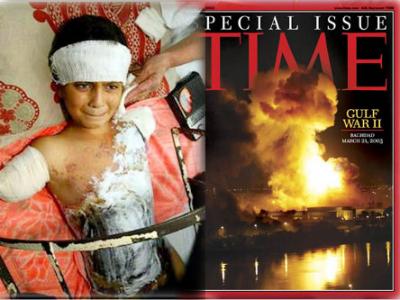
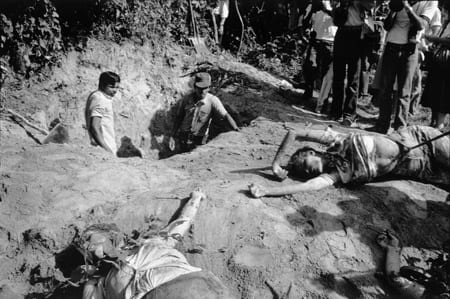

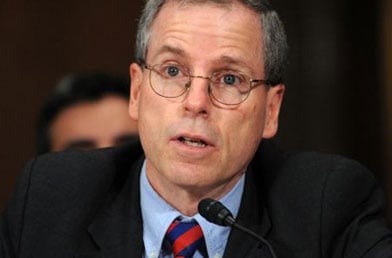

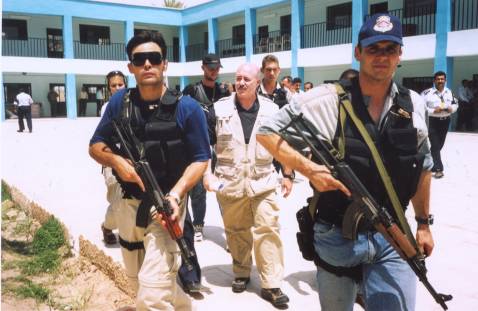
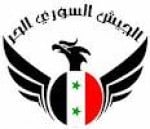

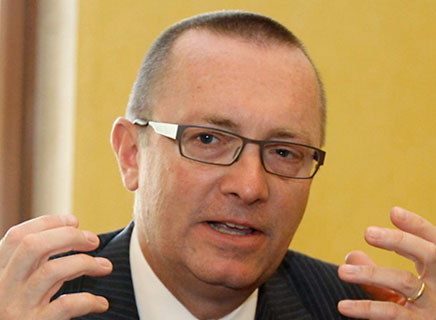 In June 2012, Jeffrey Feltman (image: Left) was appointed UN Under-Secretary-General for Political Affairs, a strategic position which, in practice, consists in setting the UN agenda (on behalf of Washington) on issues pertaining to “Conflict Resolution” in various “political hot spots” around the world (including Somalia, Lebanon, Libya, Syria, Yemen and Mali). In a bitter irony, the countries for UN “conflict resolution” are those which are the target of US covert operations.
In June 2012, Jeffrey Feltman (image: Left) was appointed UN Under-Secretary-General for Political Affairs, a strategic position which, in practice, consists in setting the UN agenda (on behalf of Washington) on issues pertaining to “Conflict Resolution” in various “political hot spots” around the world (including Somalia, Lebanon, Libya, Syria, Yemen and Mali). In a bitter irony, the countries for UN “conflict resolution” are those which are the target of US covert operations.


